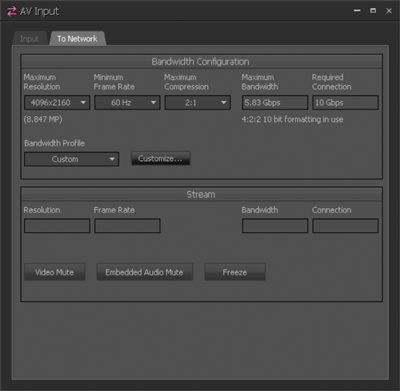We get it. You’re concerned about the status of your network, and rightfully so. Network management is the core focus of all IT departments. From hardware maintenance to enterprise software implementations to desktop support, all IT roles and functions tie back to maintaining the overall health of the network. The size of a network — whether you count switch ports or endpoints — seems to increase exponentially as each new employee joins the company. So even small companies of 20-50 employees often consider implementing network management systems (NMS) to help tame their multi-headed network hydra.
The purpose of an NMS is to identify issues as soon as they occur to minimize or prevent productivity slowdown or data loss. For enterprise-sized companies, an NMS is a must have because it’s the only practical way a technology manager can determine whether their network is healthy. As more AV components and systems are connected to the network, the role of AV in infrastructure planning is slowly but surely increasing in importance as part of an enterprise’s strategy for network management.
Network management systems often focus on five functional areas: fault management, configuration management, performance management, security management, and accounting management. AV primarily impacts the performance and security sections.
The security aspect (802.1X)
Network security is a critical concern for IT departments. Every device connected to a company’s network — whether wired or wireless — is a potential ingress point for ne’er-do-wells. To combat the problem, 802.1X authentication prevents unauthorized devices from accessing your network and is widely adopted across IT products of all types.
However, support for 802.1X authentication is not nearly as prevalent in AV devices. Until recently, network security was by and large not a high priority across the pro AV industry. This forced IT departments to make security exceptions to allow AV products onto their networks and increased the potential risk for security holes.
Since the release of Tesira 3.6 firmware and software, Biamp supports 802.1X authentication on both the Control and VoIP ports of all our Tesira DSPs, including Tesira SERVER, SERVER-IO, TesiraLUX, and all models of TesiraFORTÉ.
To learn more, check out our overview video of 802.1X authentication in Tesira.
The performance aspect (bandwidth management)
In the age of “big data”, video streaming is still one of the largest bandwidth users. Whether your network is 1Gb or 10Gb, unmanaged video streams have a propensity for flooding ports (or worse). Most network management systems monitor port traffic to alert technology managers of potential traffic issues on the network, but it would be much more efficient if the video distribution system would manage its bandwidth on your behalf.
TesiraLUX offers multiple software-based options for managing bandwidth over the network, including setting maximum resolution, frame rate floor, and/or a rate of compression. Plus, AVB/TSN guarantees bandwidth reservation and automated QoS setup to prevent traffic flooding.

By letting the platform and network automate as much as possible, you can optimize available bandwidth and provide the best possible experience for viewers of the video content that’s being transmitted over the network, without negatively impacting other traffic on the network.
SageVue™ and network management systems
SageVue is our new browser-based monitoring and management platform, allowing you to check the status of your Tesira and Devio devices with a few mouse clicks. Even better for technology managers is the fact that SageVue ships with a RESTful API, allowing you to pull data from SageVue regarding the health of your Biamp AV systems into your preferred network management system or custom dashboards. We’ve also made 802.1X configuration available through SageVue, allowing technology managers to configure 802.1X without requiring access to Tesira design files.

We’re very excited about SageVue, and hope you will be too. Check out our website for more information on SageVue.
